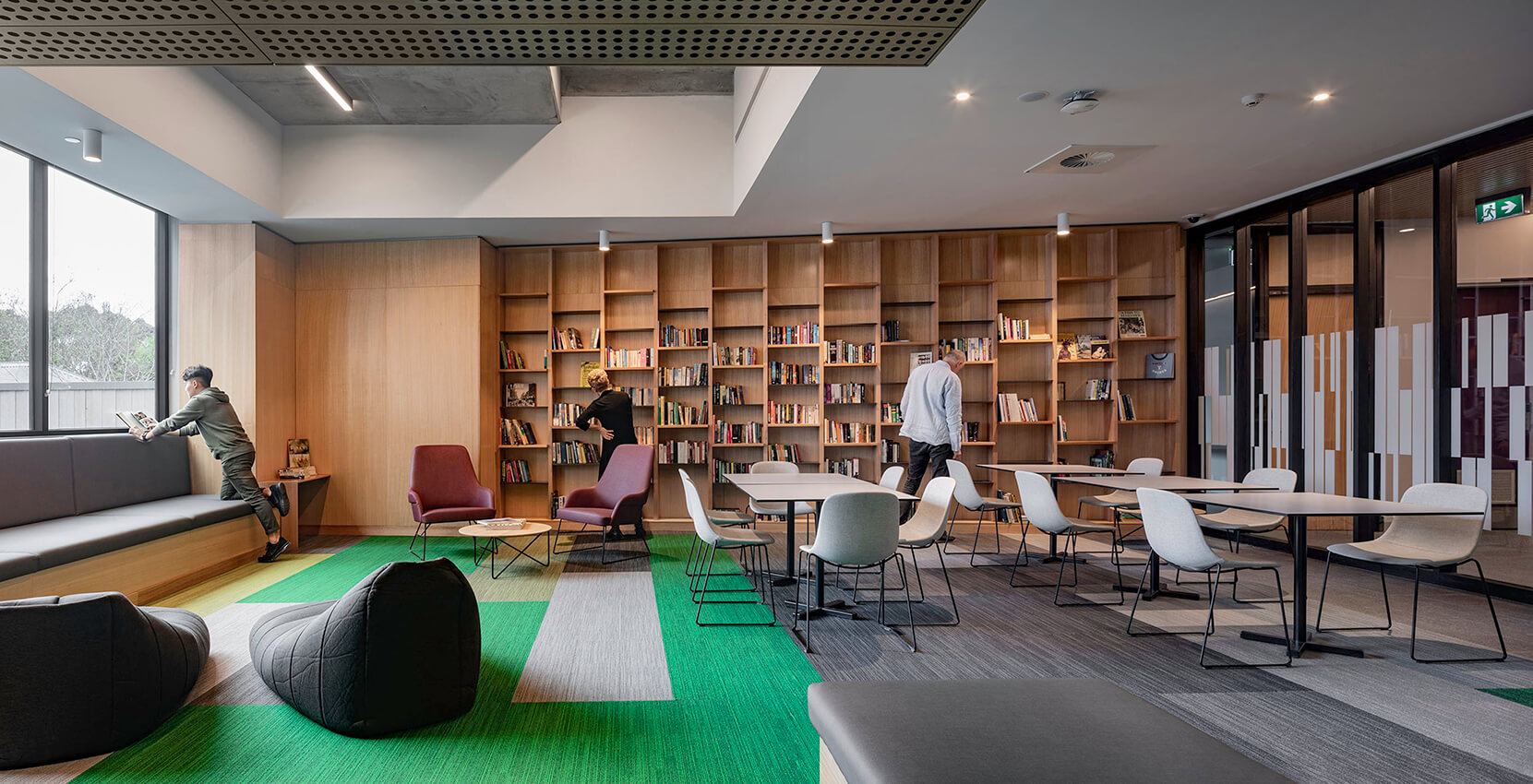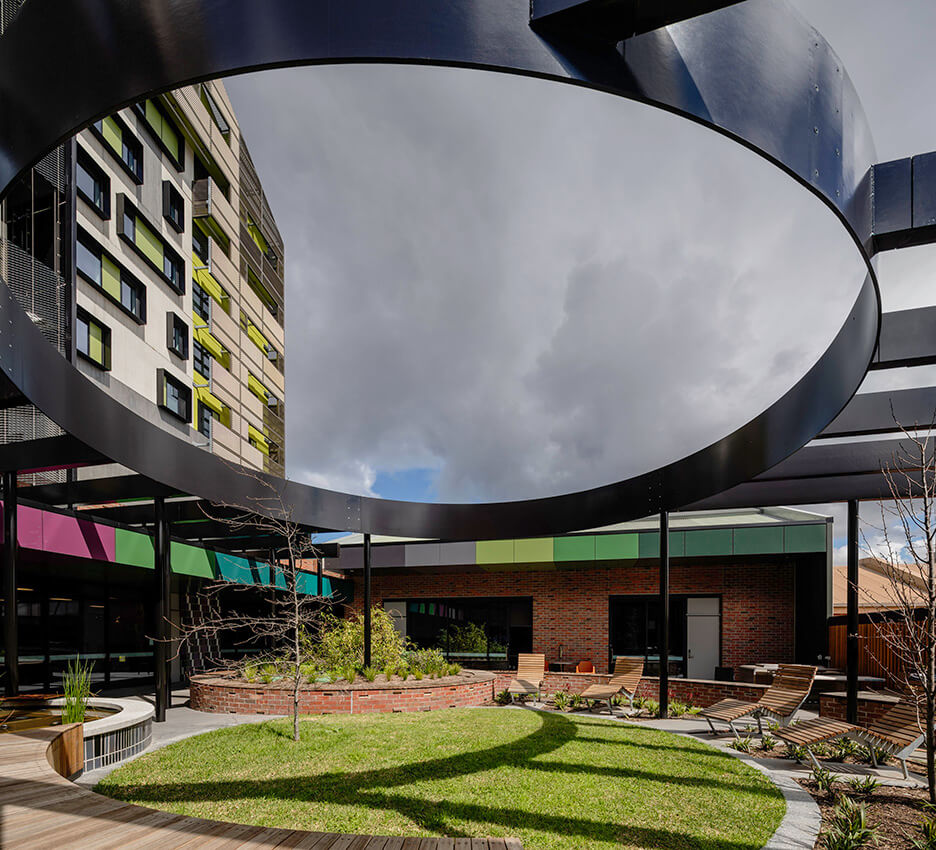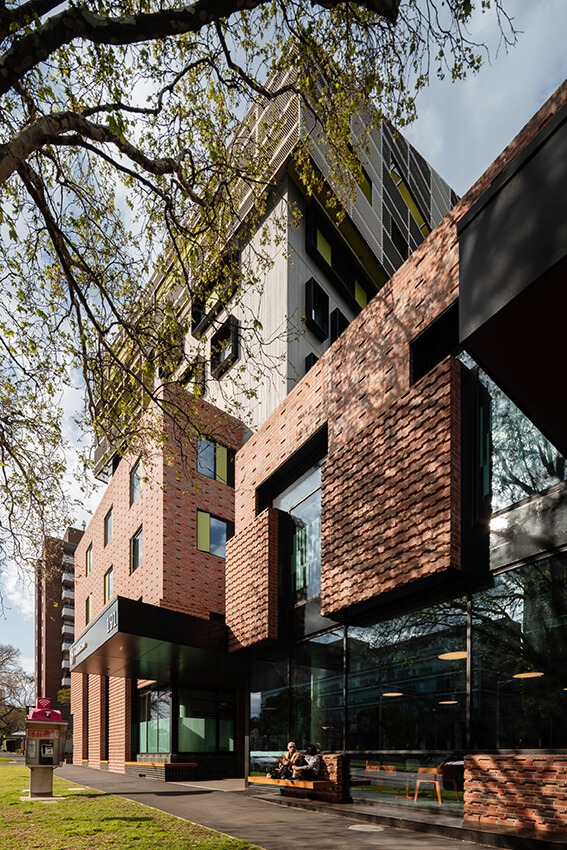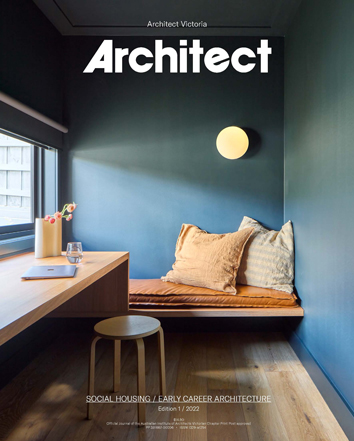Ozanam House: MGS Architects
Interview by Eli Giannini

Joshua Darvill, coordination, engagement and participation manager at Ozanam House provides a snapshot of the services provided, long-term sustainable outcomes and reassessing the needs of the community.
Q: Tell us briefly how Ozanam House works. How does the provision of services interact with the provision of housing? Or is housing a separate issue managed independently?
They say the cure to homelessness is affordable housing, and this is particularly true in metropolitan Melbourne where the demand for housing far, far outstrips the supply. Ozanam House exists to support people who are at a crisis point in their lives because they have been economically disadvantaged from the provision of housing and have exhausted all their social and community connections. Hence Ozanam House is here to provide the interim support to address the issues and barriers that have prevented them from obtaining sustainable long-term accommodation. To catch people when they are at that real crisis point in their lives and give them safe and secure accommodation. By giving them support from the moment people arrive our primary goal is to help people leave and never come back because those issues no longer affect them.
Q: Are there statistics which you can point us to that give us the typical duration of that pointy end you’ve mentioned?
The average resident stays at Ozanam House for 103 days. However, the question about duration is difficult to answer because the clients are so diverse. We support people who are entrenched in homelessness or come from an experience of longterm rough sleeping and marginal housing, and others who are first time homeless (through COVID, family violence, mental health or other factors) and have never had these experiences before. It is a very broad population which is becoming broader. For example, older females are an emerging cohort – many typically have not been the breadwinners for their families and are finding themselves homeless towards the latter part of their lives. We have had to adapt our practice and response accordingly.
Q: How does the walk-in service work in reality? How does it work practically?
There are several ways in which people enter the system. The practical pathways into accommodation support are generally through the Homelessness and Housing Access Points which are funded by the Victorian Government and run by not-for-profit agencies like VincentCare. Access points service local government areas, and we have an intake worker who collaborates with them to identify people in need, so that as soon as there is a vacancy we can prioritise depending on individual need and vulnerability. Typically, someone will go to an access point and undertake an assessment, however, Ozanam House also has a big intake directly from mental health in-patients units, police, hospital emergency departments and others in the community whom we come across that are not readily able to engage with homelessness services.



Q: Can you give us a snapshot of a day in the life of Ozanam House. What happens during the day or night?
We had to modify our services a lot during COVID. Pre-COVID, the Homelessness Resource Centre (HRC) was an open-access service where we opened our doors at 7.30am and offered our clients coffee, meals, social and recreational activities, health and treatment services and other supports. Through the pandemic, we have had to adjust to operate a more restricted, COVID-safe service – we offer meals and referral services through a window (the cafe/social enterprise courtyard on Flemington Road). There will be a point in the next couple of months when we are planning to reopen the HRC – as soon as we can safely do so.
Ozanam House is staffed 24/7; however, the majority arrive at about 7.30am. Staff do a handover, and the intake workers will then look at the vacancies for the day. We offer three meals to all our residents: breakfast, lunch and dinner. We have a commercial kitchen, staffed by a catering manager and cooks. We have two broad cohorts of staff on site: engagement workers, who manage the operational side of things, such as making sure people pay their service fees, managing critical incidents and running planned activities. We also have the support workers who manage the one-on-one case management with our residents – collaborating on case plans and working to identify the support our residents need to exit into longer-term sustainable outcomes.
Q: So, what is critical? If other housing providers want to adopt your model but are unable to provide the range of services available, what are the essentials/ fundamentals that are needed?
Fundamentally, we are a crisis accommodation service; however, the support component comes first. We are a program that offers support with accommodation attached. In other words, any viable model of crisis accommodation, which is geared towards achieving long-term sustainable outcomes, puts support front and centre and uses that as the foundation for the accommodation. We have been purposeful in ensuring the support component drives the physical environment as well as the broader components of residential accommodation.
Q: So, for those whose issue is mainly affordable housing how much support is still required?
In the absence of affordable housing for people on lower incomes, which is really the status quo in Victoria, the support we provide is about maximising people’s earning capacity. For that cohort, the issue is strictly that they cannot afford housing, so we will help them find something through the homelessness service system that is affordable such as social or community housing, or support them to increase their income so they can afford housing in the private rental market.
Q: What lessons and potential positives have come out of periods of lockdown?
That’s a very good question! At the end of last year, we commented a lot on strength when we were reflecting on 2020. We highlighted the resilience of the clients we work with and the staff. If anything, COVID demonstrated that as a service and as a facility we are very capable at working reactively when the context changes.
The other big lesson for us in 2020 was the importance of making sure that in addition to support and accommodation, that we also offer people meaningful social and community programs that they actually want to participate in. Client-led ways for our residents to use their time. Part of our model revolves around participation. This is just as much about clients giving back as us offering activities and meaningful social and community programs that are driven by the client.
Therefore, 2020 was often about speaking with our residents and saying that we’ve all got a curfew, we only have four reasons to leave our homes, and there’s not a lot to do. So how can we make this time together worthwhile for you?
Q: So, was the lesson then about stepping back and reassessing what was essential?
Yes, that is a good summary. What are the real fundamentals and needs? How can we make Ozanam House more than the place that people come to when they have no other option, where typically, we are catching someone at their worst, most chaotic, anxiety-inducing or turbulent period of their life How do we make it a space that is also conducive to growth, betterment, and how do we make our service as positive an experience as we can?
Q: Have you received feedback from that time, or is this still to come?
We have actually done some work on that and periodically receive feedback. Recently we have had some really positive feedback, with 70% of residents agreeing or very strongly agreeing that they were very well looked after throughout the pandemic, that their experience was of a high standard, and the service delivery outstanding. So, the majority were very satisfied.
Q: Did they talk specifically about the sorts of activities that they found more helpful?
The information we have is quite general but what they found was that they were able to maintain a general semblance of structure and normality through the lockdown period.
Q: Can you please go through the recovery model which is at the essence of the services you provide? The notion that housing and recovery are strongly linked.
VincentCare’s overriding practice framework is called the Homelessness Recovery Model, which speaks to the fact that people typically come to Ozanam House in a state of crisis. During that pre-recovery period, we spoke with our residents regularly about their goals. Through our involvement and engagement with the person, we seek to assist their recovery by surrounding them with the support they identify as needing. It is a very client-led process.
Through this period, we make sure that people are aware of what they are entitled to, and advocate for them when they are not getting it. Through a recovery-based intervention, we seek to lead people into a period of growth where they are sustained with housing and their crisis is stabilised so that when our support is finished they are then able to lead an autonomous, independent life in their community of choice.
Q: There was a lot of discussion about the provision of meals during the briefing stage of the project. Are meals also distributed to the wider community experiencing homelessness?
Currently the kitchen is used for cooking meals for Ozanam House residents and Homelessness Resource Centre clients. However, we definitely recognise the huge potential in this space.
Q: More specifically about the building now, can you tell us what works well and what doesn’t work? How could the design be improved?
In terms of things that work well, it’s the vast majority of things. The standard of amenity is exceptional – not just for crisis accommodation, but in general. It’s a well thought out building. Fixtures and finish are well above the standard. Aesthetically it is above and beyond any others of its kind, I think, what really impresses people from the start, the combination and the fact that Ozanam House is so far removed from people’s expectation of what crisis accommodation is.
It’s a very dynamic space as well so it’s constructed in a way that allows us to change the activity in the space. For example, one space is used as a meal service space and then last week, we converted the same area into a marketplace. Similarly, the space can be used for presentations, or you know I think it’s got the latitude to be what it needs to be to deliver the services that we provide. The other thing is that the staff areas are well thought out and I imagine that I will never work in a space as good as this!
It is difficult to say what doesn’t work but it is in the type of work we do that we are presented with challenges, so no space is going to work 100% of the time for 100% of the people. There are little things that we say like: “we might want a CCTV camera here or there” but nothing major. We have never said “I wish this was different”.
Eli Giannini LFRAIA, principal MGS Architects, is the ‘G’ in MGS Architects. Over the last 30 years Eli has been responsible for the design direction of the practice and also winning numerous industry awards. Eli has promoted architectural design, theory and research through her practice, teaching, writing, exhibitions, and conference presentations and as eminent architect on various competition jury panels.




